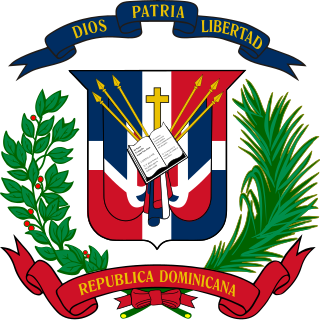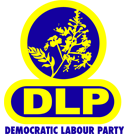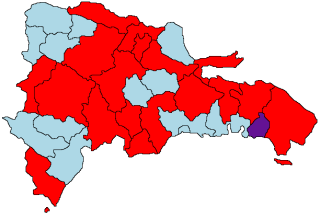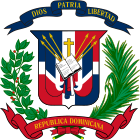
The Dominican Republic is a country located on the island of Hispaniola in the Greater Antilles archipelago of the Caribbean region. It occupies the eastern five-eighths of the island, which it shares with Haiti, making Hispaniola one of only two Caribbean islands, along with Saint Martin, that is shared by two sovereign states. The Dominican Republic also borders the Atlantic Ocean to the north. It is the second-largest nation in the Antilles by area at 48,671 square kilometers (18,792 sq mi), and third-largest by population, with approximately 10.7 million people, down from 10.8 million in 2020, of whom approximately 3.3 million live in the metropolitan area of Santo Domingo, the capital city. The official language of the country is Spanish.

The recorded history of the Dominican Republic began in 1492 when the Genoa-born navigator Christopher Columbus, working for the Crown of Castile, happened upon a large island in the region of the western Atlantic Ocean that later came to be known as the Caribbean. It was inhabited by the Taíno, an Arawakan people, who called the eastern part of the island Quisqueya (Kiskeya), meaning "mother of all lands." Columbus promptly claimed the island for the Spanish Crown, naming it La Isla Española, later Latinized to Hispaniola. After 25 years of Spanish occupation, the Taíno population in the Spanish-dominated parts of the island drastically decreased through genocide. With fewer than 50,000 remaining, the survivors intermixed with Spaniards, Africans, and others, forming the present-day tripartite Dominican population. What would become the Dominican Republic was the Spanish Captaincy General of Santo Domingo until 1821, except for a time as a French colony from 1795 to 1809. It was then part of a unified Hispaniola with Haiti from 1822 until 1844. In 1844, Dominican independence was proclaimed and the republic, which was often known as Santo Domingo until the early 20th century, maintained its independence except for a short Spanish occupation from 1861 to 1865 and occupation by the United States from 1916 to 1924.

Joaquín Antonio Balaguer Ricardo was a Dominican politician, scholar, writer, and lawyer. He was President of the Dominican Republic serving three non-consecutive terms for that office from 1960 to 1962, 1966 to 1978, and 1986 to 1996.

The Dominican Republic is a representative democracy, where the President of the Dominican Republic functions as both the head of the government and head of the multi-party system. Executive power is exercised by the government. Legislative power is vested in the bicameral National Congress. The Judiciary is independent of the executive and the legislature.

Rafael Leónidas Trujillo Molina, nicknamed El Jefe, was a Dominican military commander and dictator who ruled the Dominican Republic from August 1930 until his assassination in May 1961. He served as president from 1930 to 1938 and again from 1942 to 1952, ruling for the rest of his life as an unelected military strongman under figurehead presidents. His rule of 31 years, known to Dominicans as the Trujillo Era, was one of the longest for a non-royal leader in the world, and centered around a personality cult of the ruling family. It was also one of the most brutal; Trujillo's security forces, including the infamous SIM, were responsible for perhaps as many as 50,000 murders. These included between 12,000 and 30,000 Haitians in the infamous Parsley massacre in 1937, which continues to affect Dominican-Haitian relations to this day.

The Democratic Labour Party (DLP), colloquially known as the "Dems", is a political party in Barbados, established in 1955. It was the ruling party from 15 January 2008 to 24 May 2018 but faced an electoral wipeout in the 2018 general election which left it with no MPs.

The president of the Dominican Republic is both the head of state and head of government of the Dominican Republic. The presidential system was established in 1844, following the proclamation of the republic during the Dominican War of Independence. The president of the Dominican Republic is styled Your Excellency, Mr. President during his time in office. His official residence is the National Palace.

The Congress of the Dominican Republic is the bicameral legislature of the government of the Dominican Republic, consisting of two houses, the Senate and the Chamber of Deputies. Both senators and deputies are chosen through direct election. There are no term limits for either chamber.

The Dominican Liberation Party is a political party in the Dominican Republic. Founded in 1973 by former president Juan Bosch, the party, along with the Dominican Revolutionary Party, and Social Christian Reformist Party, has dominated politics in the country since the establishment of democracy in the early 1960s.
The Dominican Party was the de facto only permitted political party in the Dominican Republic during the dictatorship of Rafael Trujillo, who ruled the country from 1930 to 1961. Its symbol was a palm tree.

Presidential elections were held in the Dominican Republic on 16 May 2000. A runoff was to have taken place on 30 June between first-place finisher Hipólito Mejía of the Dominican Revolutionary Party (PRD) and runner-up Danilo Medina of the Dominican Liberation Party (PLD); former president Joaquín Balaguer of the Social Christian Reformist Party (PRSC) finished third. However, Medina pulled out of the runoff after concluding he did not have enough support to overcome Mejía's first-round lead, handing the presidency to Mejía. Voter turnout was 76.1%.

General elections were held in the Dominican Republic on 16 May 1930. They were held three months after President Horacio Vásquez was deposed in a coup led by Rafael Estrella Ureña. In a deal with Estrella, Dominican Army commander Rafael Trujillo kept his men in barracks under the pretense of "neutrality," clearing the way for Estrella to take over as provisional president. In return, Trujillo was allowed to run for president in the May elections. During the campaign, other candidates, as well as election officials, were subjected to severe harassment by Trujillo's soldiers. The other candidates withdrew when it became clear that Trujillo would be the only candidate allowed to campaign unhindered, leaving him to win the presidency unopposed. The Confederation of Parties, a pro-Trujillo grouping, won every seat in the Congressional elections.

General elections were held in the Dominican Republic on 16 May 1934. Two years earlier, the Dominican Party of President Rafael Trujillo had been declared the only legally permitted party. However, the country had effectively been a one-party state since Trujillo assumed office in 1930.

General elections were held in the Dominican Republic on 16 May 1938. At the time, the country was a single-party state, with the Dominican Party as the only legally permitted party.

General elections were held in the Dominican Republic on 16 May 1942. Rafael Trujillo, the country's de facto leader since 1930, was the sole presidential candidate and was returned to office unopposed. His Dominican Party won every seat in the Congressional elections.

General elections were held in the Dominican Republic on 16 May 1952. Héctor Trujillo was the only candidate in the presidential election, and was elected unopposed, although his predecessor and brother Rafael Trujillo maintained absolute control of the country. The Dominican Party won every seat in the Congressional elections.

General elections were held in the Dominican Republic on 16 May 1957. Héctor Trujillo was the only candidate in the presidential election, and was elected unopposed, although his predecessor and brother Rafael Trujillo maintained absolute control of the country. The Dominican Party won every seat in the Congressional elections.

General elections were held in the Dominican Republic on 20 December 1962. They were the first after the end of the Trujillo dictatorship two years earlier, and are generally regarded to be the first free elections in the country's history.

General elections were held in the Dominican Republic on 16 May 1986. Joaquín Balaguer of the Social Christian Reformist Party (PRSC) won the presidential election, whilst the PRSC-led alliance won the Congressional elections. Voter turnout was 72%.
The 1963 Dominican coup d'état was a Coup d'état that took place on 25 September 1963 against President Juan Bosch in the Dominican Republic.














